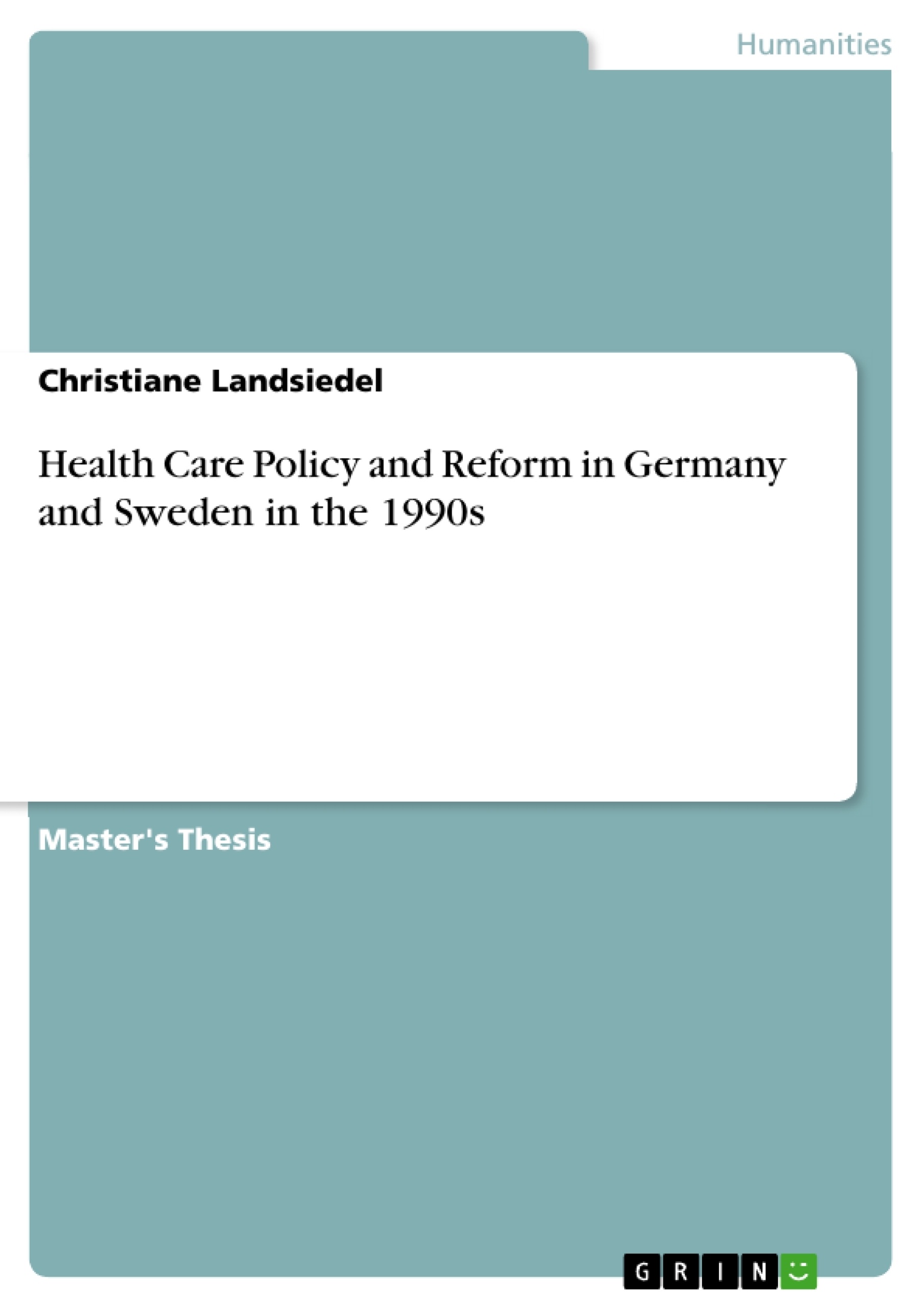The provision of welfare is a defining characteristic of the states in Europe, as well as the target of various reform efforts. Within the European welfare states, health care is embedded as a public affair and despite slight variations, the majority of European states guarantees most of the cost of using health services to almost all of their citizens (OECD 1992; 1994). As health care is among the most personal issues, it is also among the most politically discussed. During the 1990s, reforms were introduced in the health care sector in many European countries with the common goal to make existing health care systems more cost efficient and gain greater control over how public resources were spent within them (Mossialos/Le Grand 1999). However, expenditure cuts with regard to the health care system are politically delicate.
Inhaltsverzeichnis (Table of Contents)
- Introduction
- Methodology
- Theoretical Background
- Path Dependency
- Convergence Theory
- Hacker's Four Modes of Policy Change
- Health Care Policy and Reform in Germany
- Principles and Basic Elements of the German Health Care System
- The Health Insurance
- Rights and Benefits in the Health Care System
- Health Care in the Course of the Political Development
- Free Choice to Choose - Reforms during the Past Decade
- The Politics of the New Government
- Conclusion
- Principles and Basic Elements of the German Health Care System
- Health Care Policy and Reform in Sweden
- Principles and Basic Elements of the Swedish Health Care System
- The National Health System
- Rights and Benefits in the Health Care System
- Health Care in the Course of the Political Development
- The “Choice Revolution”
- Beyond Managed Competition - Privatisation of Swedish Health Care Service
- Continued Privatisation of the Health Care System
- Conclusion
- Principles and Basic Elements of the Swedish Health Care System
- Performance and Reform – Germany and Sweden in Comparison
Zielsetzung und Themenschwerpunkte (Objectives and Key Themes)
This master's thesis aims to analyze health care policy and reform in Germany and Sweden during the 1990s. It examines how these reforms impacted the cost-efficiency and resource management of the respective health care systems. The thesis analyzes the political and economic factors that shaped these reforms and investigates the potential consequences for the principle of equity in providing health services.
- The impact of cost containment agendas on the provision of health care in Germany and Sweden.
- The role of political power and different stakeholder interests in shaping health care policy reforms.
- The relationship between health care reform and the broader context of welfare state transformation.
- The challenges posed by demographic change and aging populations to health care systems.
- The trade-off between cost efficiency and equity in the provision of health services.
Zusammenfassung der Kapitel (Chapter Summaries)
- Introduction: This chapter establishes the context for the study, highlighting the importance of health care within European welfare states and the increasing pressure for reform during the 1990s due to rising costs and demographic changes. It also discusses the specific challenges faced by Germany and Sweden in managing their health care systems.
- Methodology: This chapter outlines the research methods employed in the thesis, providing a framework for analyzing the data and comparing the two case studies.
- Theoretical Background: This chapter introduces the theoretical framework used to analyze health care policy reform. It explores the concepts of path dependency, convergence theory, and Hacker's four modes of policy change, which will be applied to the analysis of German and Swedish reforms.
- Health Care Policy and Reform in Germany: This chapter analyzes the principles and basic elements of the German health care system, including its financing structure, coverage, and benefits. It then examines the key reforms implemented during the 1990s, focusing on the political dynamics and consequences of these changes.
- Health Care Policy and Reform in Sweden: This chapter analyzes the principles and basic elements of the Swedish health care system, including its universal coverage and the role of the national health service. It then explores the reforms that took place during the 1990s, particularly the introduction of managed competition and the increasing privatization of health care services.
- Performance and Reform – Germany and Sweden in Comparison: This chapter compares the performance of the German and Swedish health care systems in terms of cost-efficiency, access to services, and equity. It analyzes the impact of the reforms on the different dimensions of health care provision and explores the implications for the overall sustainability of these systems.
Schlüsselwörter (Keywords)
This study focuses on key themes and concepts such as health care policy, welfare state reform, cost containment, equity, path dependency, convergence theory, managed competition, privatization, Germany, and Sweden. It examines the political and economic dynamics shaping health care systems in these two countries and investigates the challenges of balancing cost-efficiency with social equity.
- Citation du texte
- Christiane Landsiedel (Auteur), 2005, Health Care Policy and Reform in Germany and Sweden in the 1990s, Munich, GRIN Verlag, https://www.grin.com/document/43715



